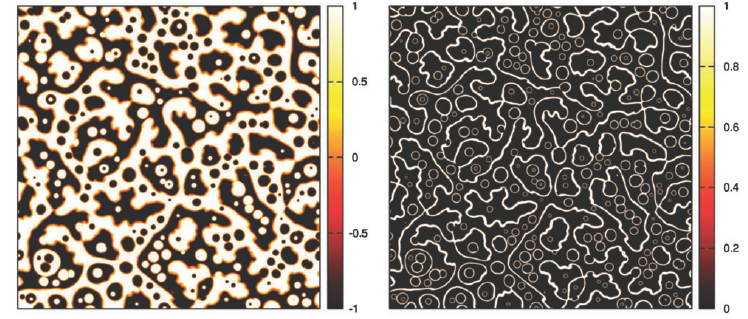
Gyula Tóth1, Bjørn Kvamme2
1Department of Mathematical Sciences, Loughborough University, Loughborough, Leicestershire, LE11 3TU, U.K.
2Institute of Physics and Technology, University of Bergen, Allégaten 55, N-5007 Bergen, Norway
In this paper the quantitative applicability of van der Sman/van der Graaf type Ginzburg–Landau theories of surfactant assisted phase separation [van der Sman et al., Rheol. Acta, 2006, 46, 3] is studied for real systems displaying high surfactant concentrations at the liquid–liquid interface. The model is applied for the water/heptane/asphaltene system (a model of heavy crude oil), for which recent molecular dynamics (MD) simulations provide microscopic data needed to calibrate the theory. A list of general requirements is set up first, which is then followed by analytical calculations of the equilibrium properties of the system, such as the equilibrium liquid densities, the adsorption isotherm and the interfacial tension. Based on the results of these calculations, the model parameters are then determined numerically, yielding a reasonable reproduction of the MD density profiles. The results of time-dependent simulations addressing the dynamical behaviour of the system will also be presented. It will be shown that the competition between the diffusion and hydrodynamic time scales can lead to the formation of an emulsion. We also address the main difficulties and limitations of the theory regarding quantitative modelling of surfactant assisted liquid phase separation.


